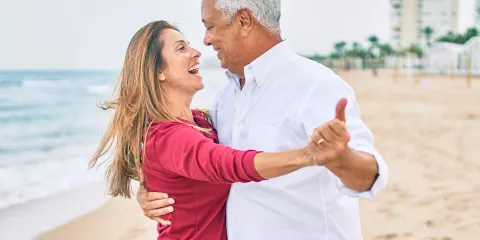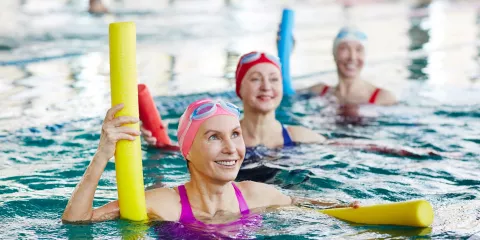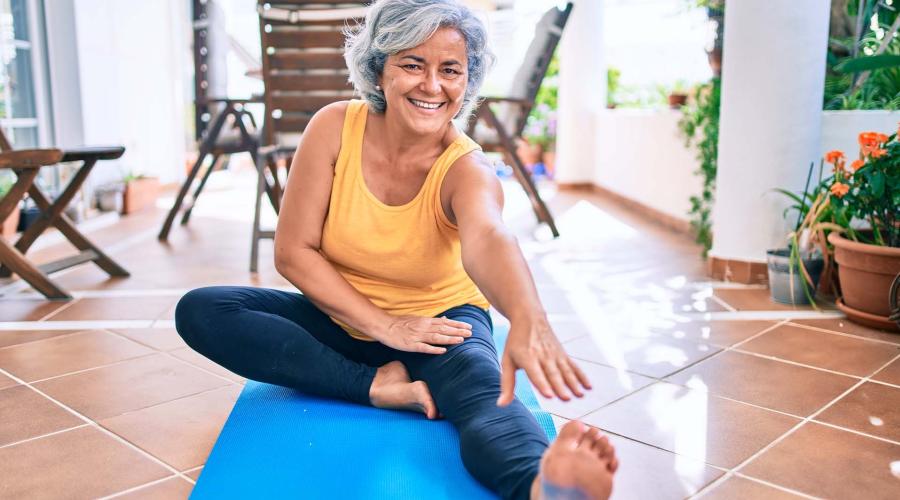
Arthritis can make exercising more challenging, but it does not mean you can’t engage in physical activity at all. Research suggests that those with osteoarthritis can functionally benefit from resistance training by helping manage symptoms and improving overall quality of life.1 A meta-analysis of clinical trials on resistance exercise in subjects with knee osteoarthritis found benefits relating to muscle strength and biomechanics.2 Additionally, strength training in older adults can help maintain and build muscle mass, and avoid a decrease in range of motion due to inactivity.
The type of exercise, intensity, and equipment used should be kept in mind when engaging in physical activity. Always consult with your doctor or qualified healthcare provider prior to beginning any exercise or strength training program. Finding an individualized program that fits your preferences, and is safe and appropriate for the level of pain, stiffness, or swelling that can result from osteoarthritis, is key to making it a sustainable habit.3
Related: How To Take Care Of Joints As You Age
Here are a few things to keep in mind when exercising if you have arthritis:
- First, consult with your doctor and make sure you are cleared to exercise.
- Your doctor may recommend that you begin by working with a physical therapist or fitness professional to learn how to safely exercise and incorporate resistance and strength training into your program.
- Start slowly and with low impact moves. Take your time with each move and if progressions feel comfortable and appropriate, make small jumps and assess how you are feeling.
- Modify moves that feel uncomfortable for you.
What You’ll Need
- Water
- Exercise mat or soft surface
- Chair
- Recommended: Long Resistance band
- Arthritis-friendly Warm-up
Arthritis-friendly Warm-up
Cat Cows: 8-10 repetitions
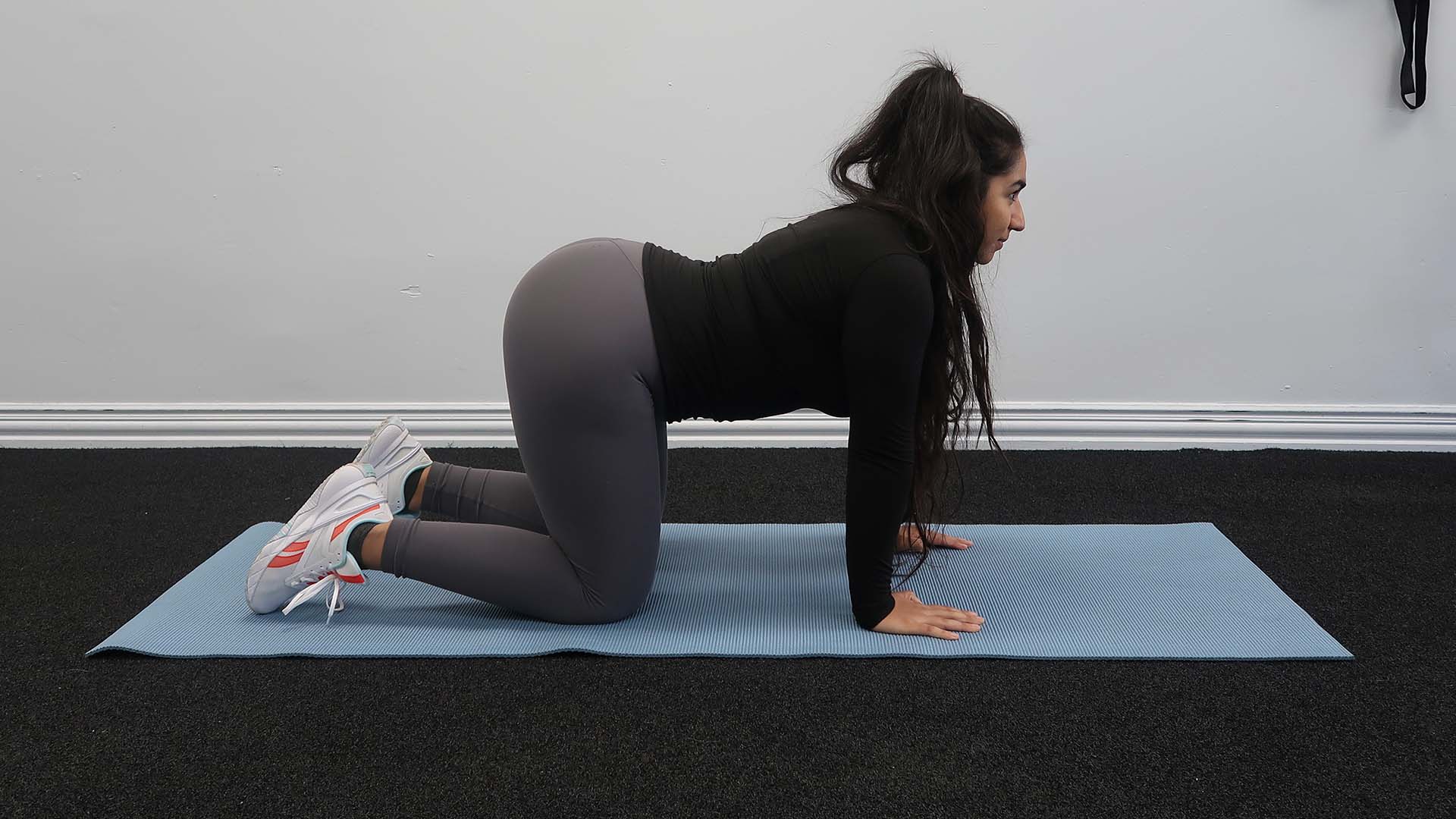
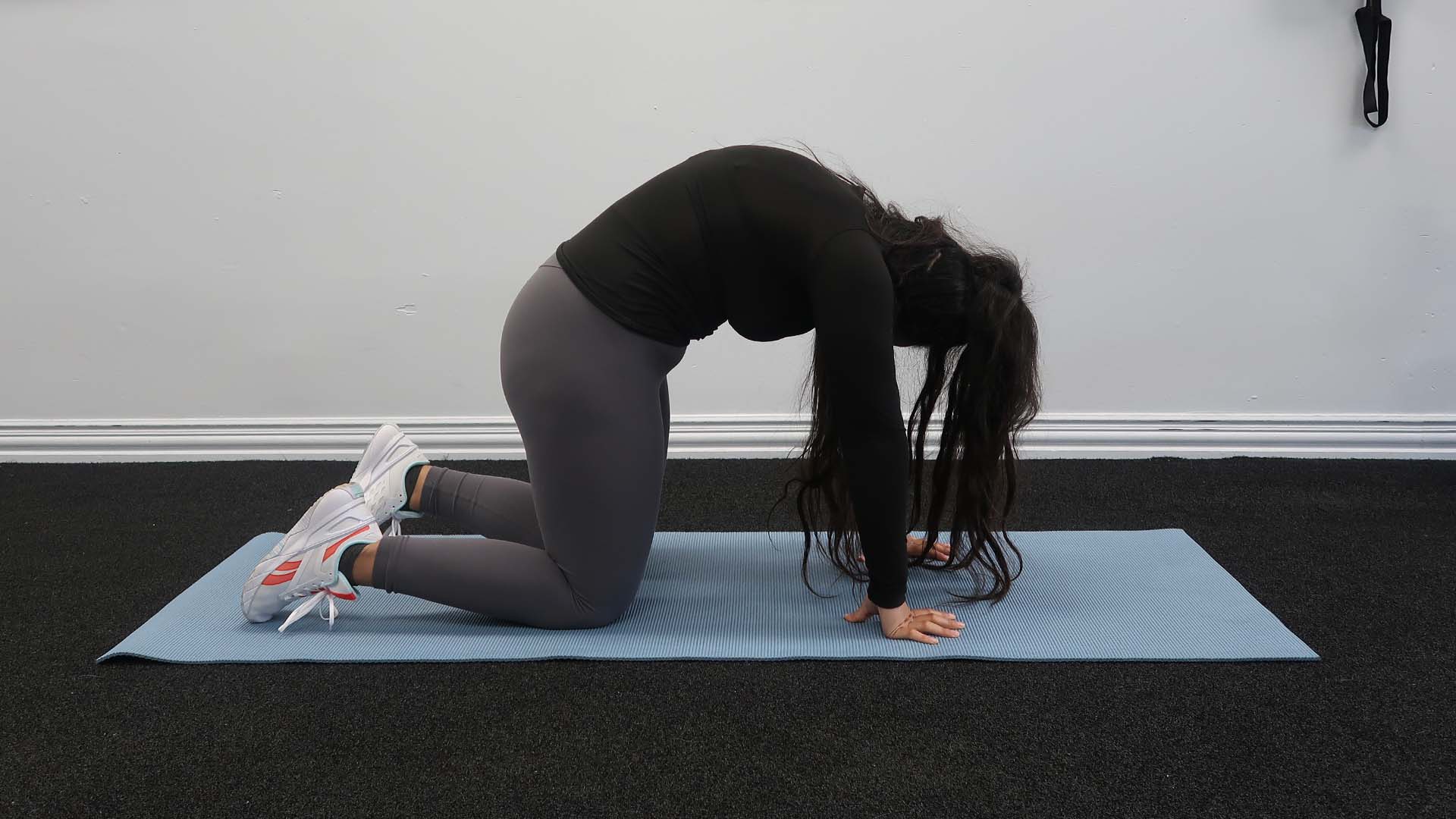
Starting in a table-top position, take a deep breath as you arch your spine and tuck in your chin. As you exhale, lift up your tailbone, chin and let your spine sink in. Alternate between positions, focusing on your breathing.
*If this position is uncomfortable on the wrists, use a chair to elevate the hand placement, placing less weight on the wrists
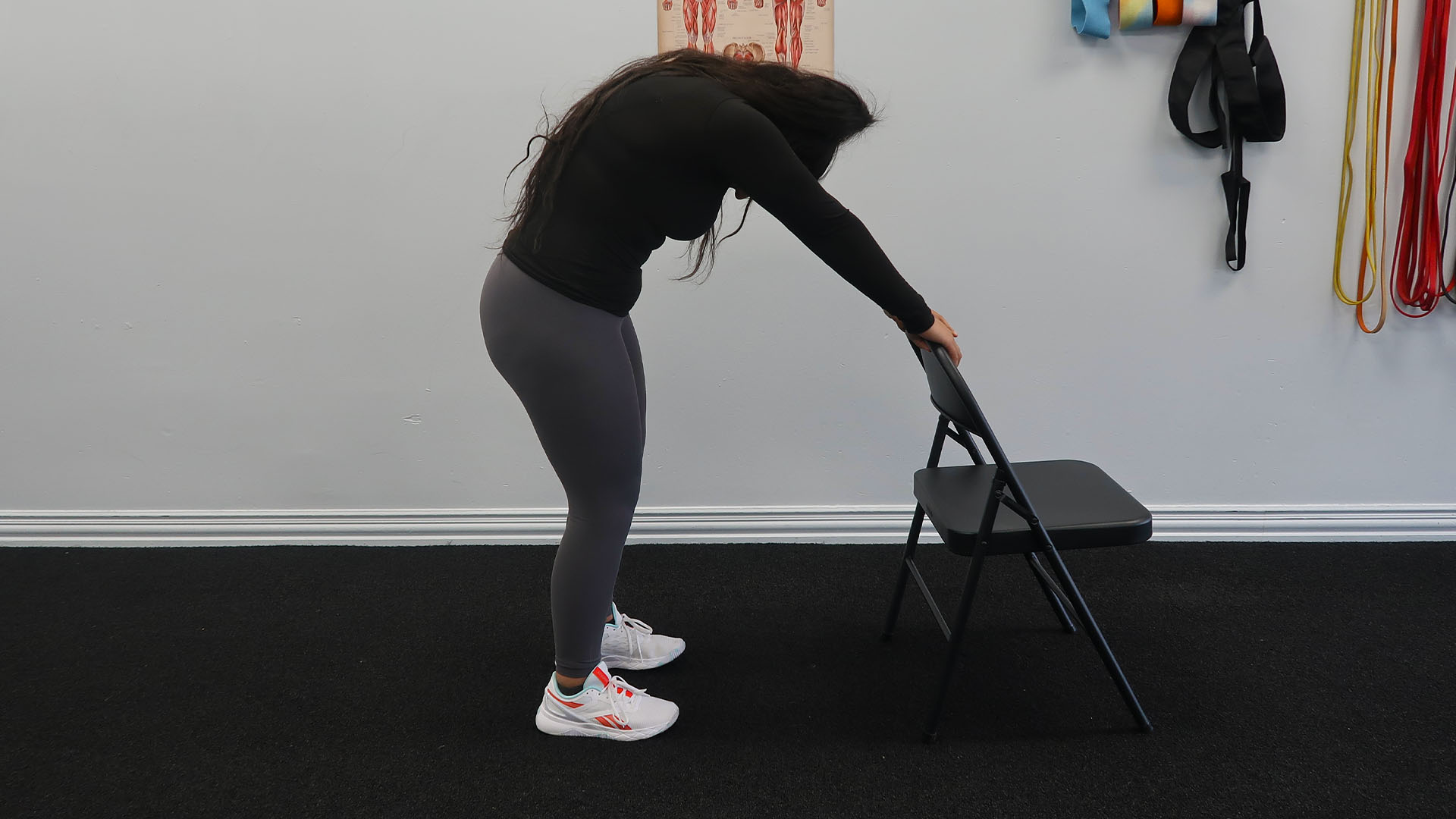
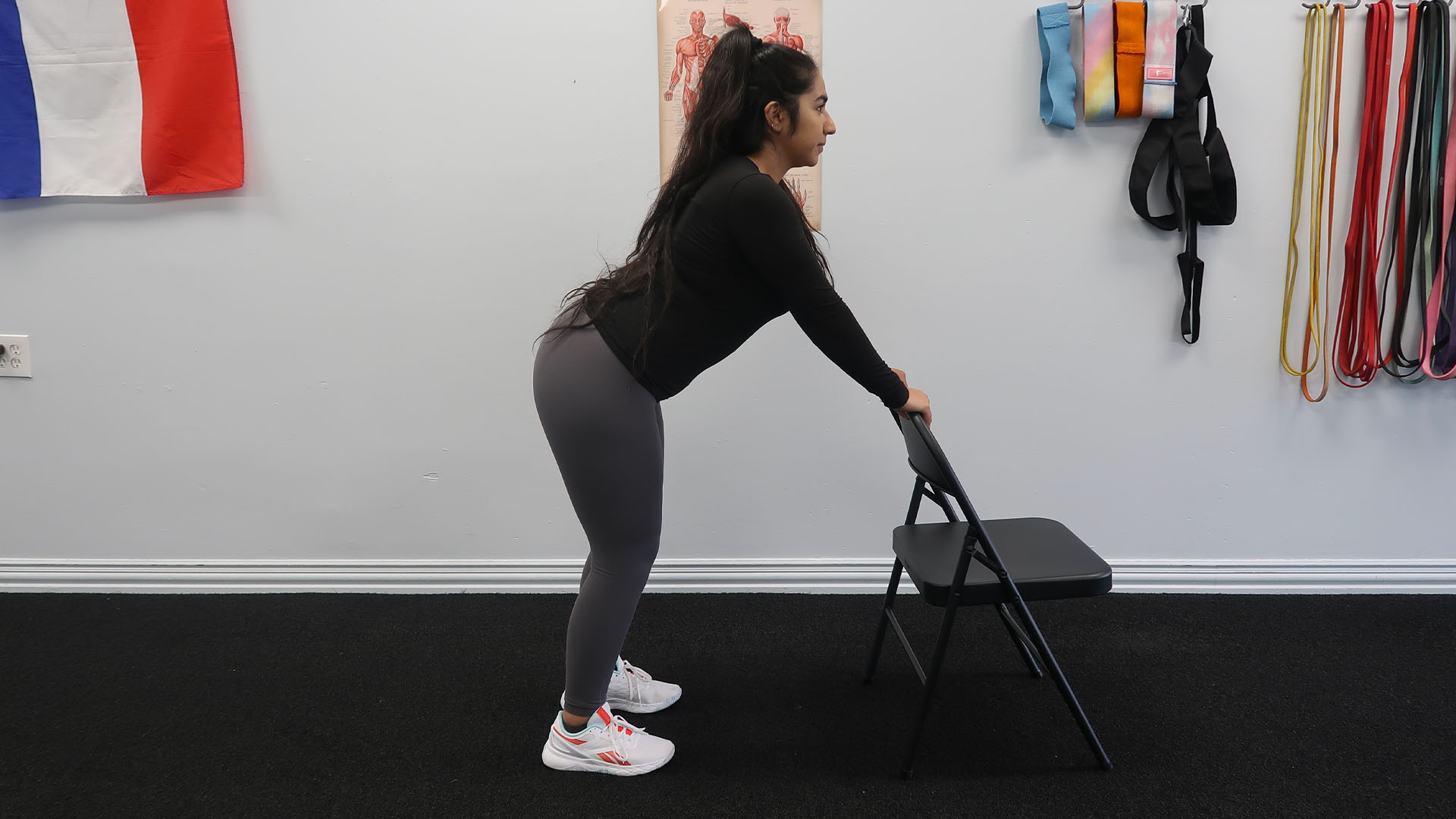
Figure 4 Stretch: 20-30 seconds per side

Using a chair, cross one leg over the other. Gently start folding forward if it feels good to deepen the stretch, taking deep breaths throughout.
Lateral Leg Raise: 8-10 repetitions per side
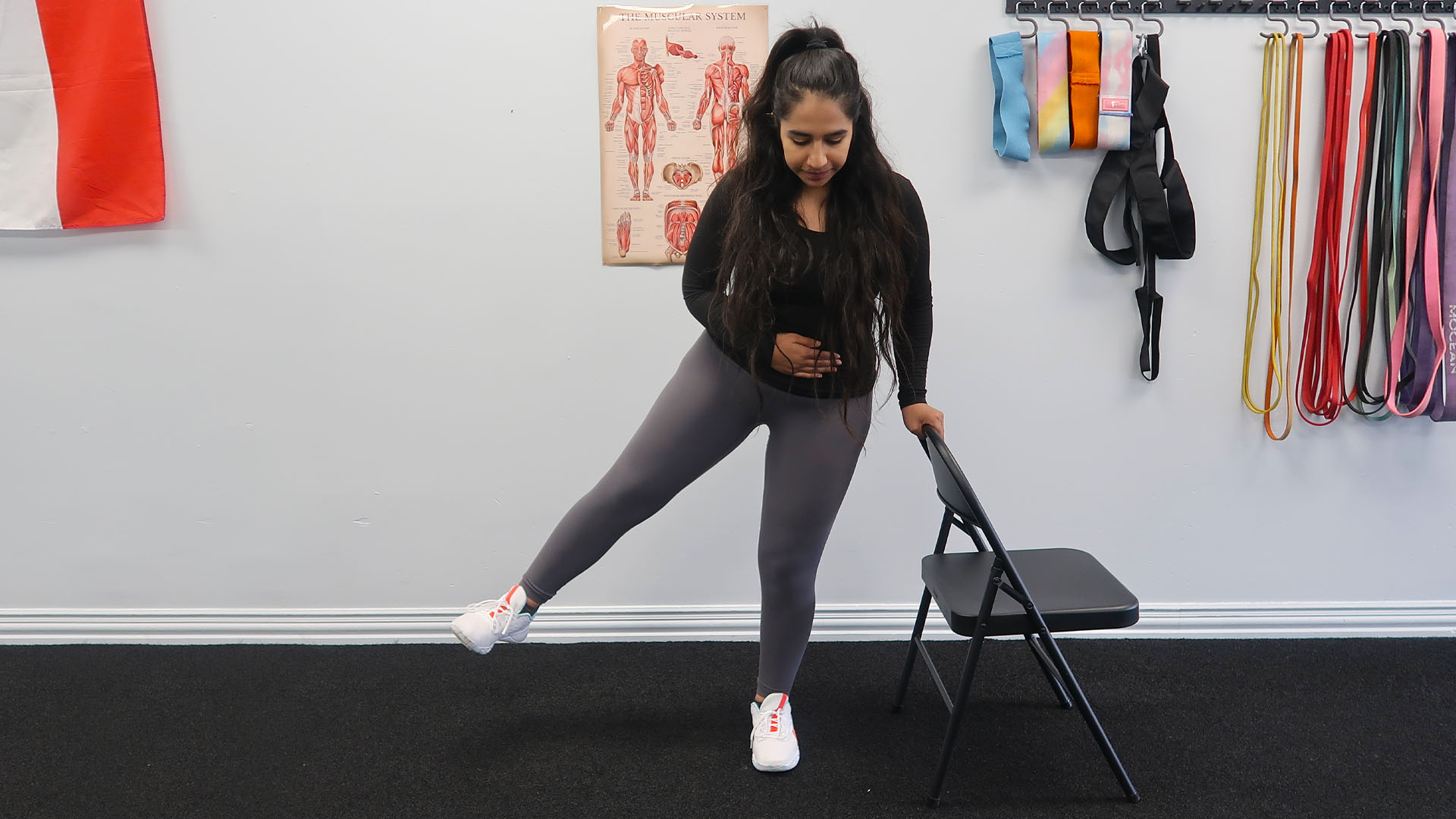
Standing up straight and holding on to the back of a chair for additional stability, lift one leg laterally, focusing on controlled movements. Complete the same movement on both sides.
Arm Circles: 20-30 seconds forward & backwards
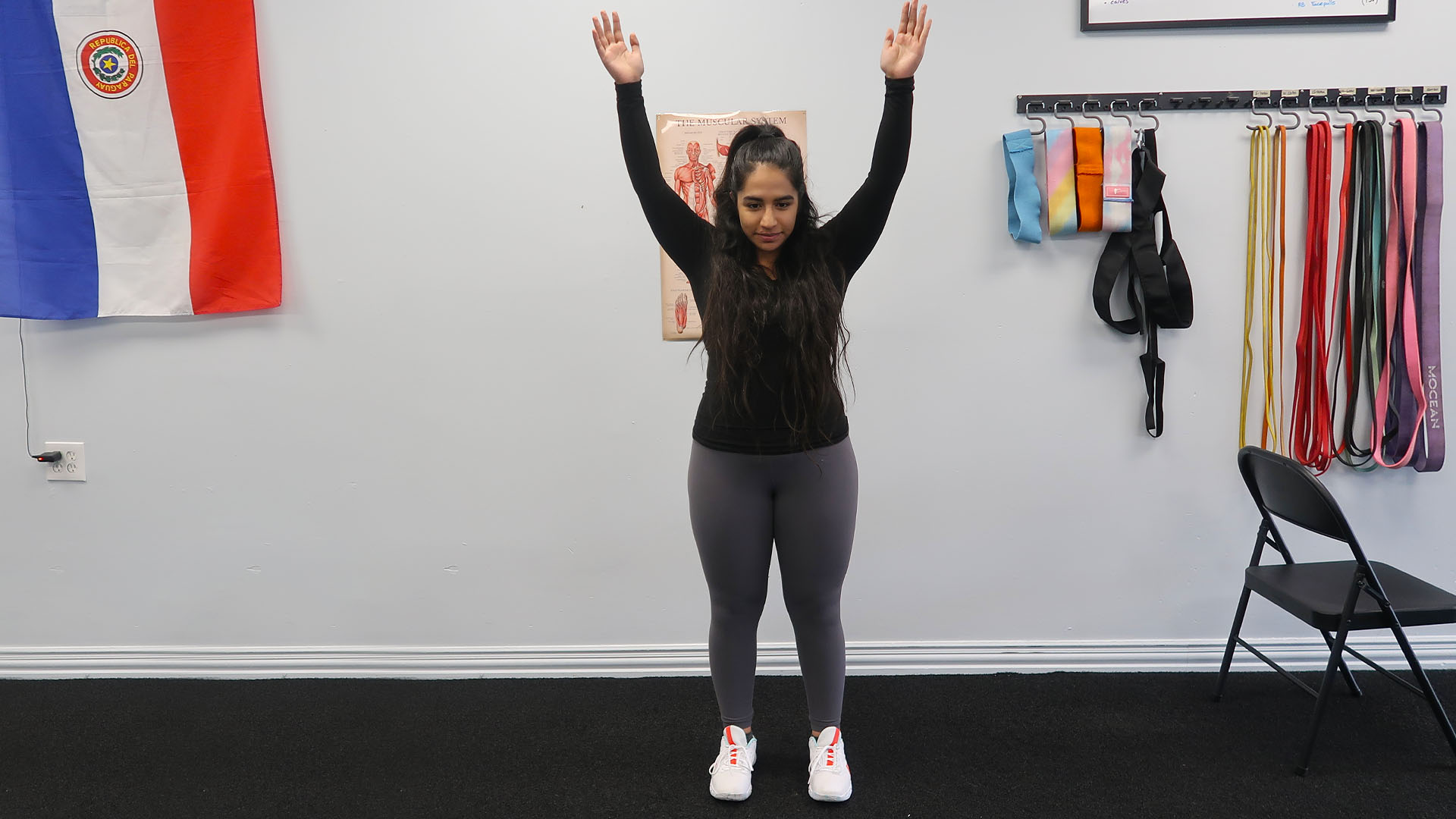
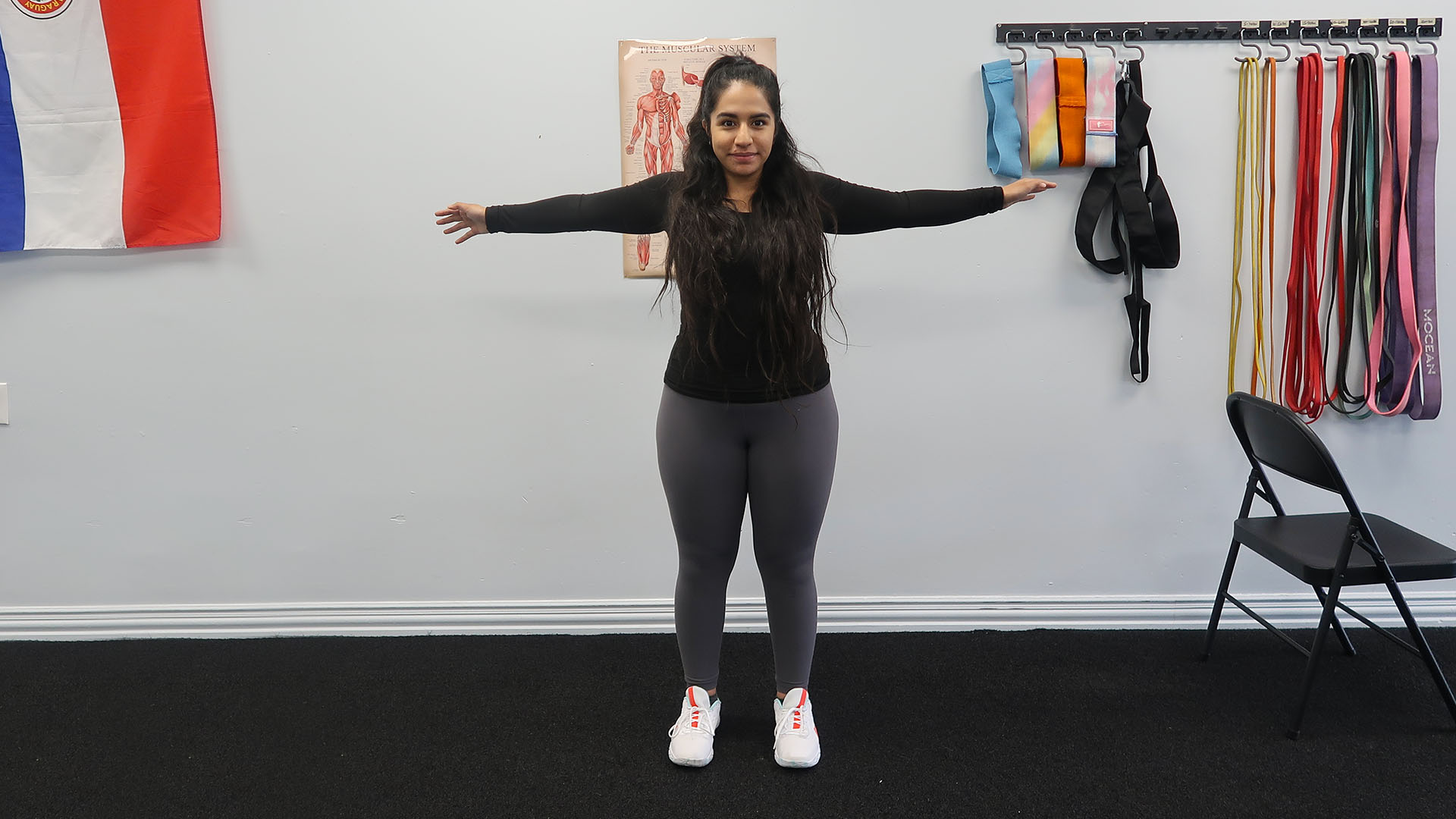
Standing up straight, move arms forward making medium to large circles, focusing on controlled movements. Switch directions once after 20 seconds.
Arthritis-friendly Workout
This 20 minute, low-impact circuit contains 5 exercises. You can complete this circuit 2 to 3 times, depending on your fitness level.
Chair Squats (8-12 repetitions)
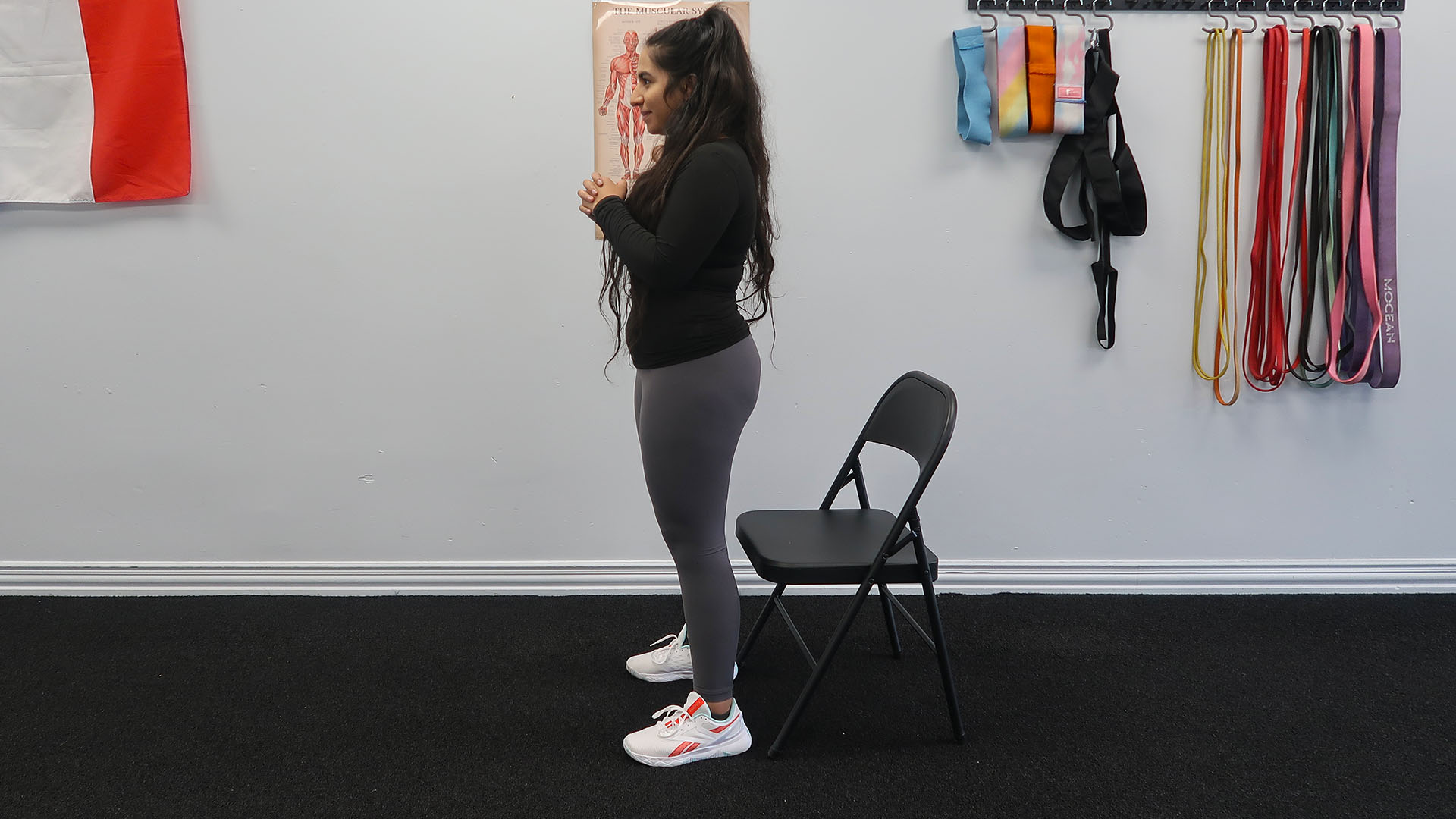
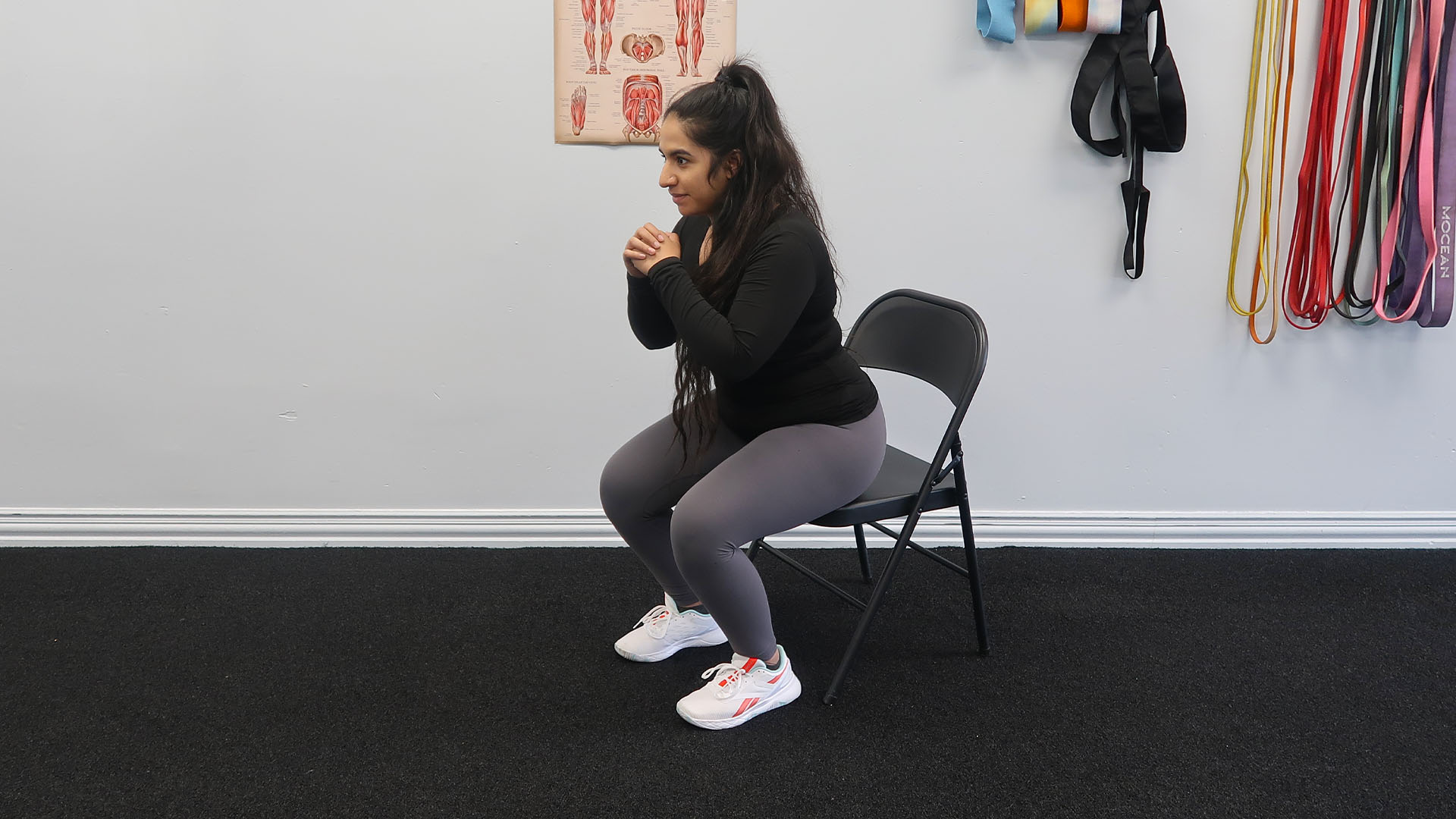
Grab a chair and align the back of your knee with the edge of the chair, taking a small step forward. Place your feet hip-width apart, and slightly point your toes outwards. Take a deep breath, bend your knees making sure they remain aligned with your toes, and sit back on the chair. Keeping your core engaged, stand back up to complete one repetition.
Progression: Hold onto some 2-5 lb hand weights, while ensuring movement is comfortable.
Pull-Apart (8-10 repetitions)
Stand with your arms extended forward holding a light resistance band, with hands shoulder-width apart.
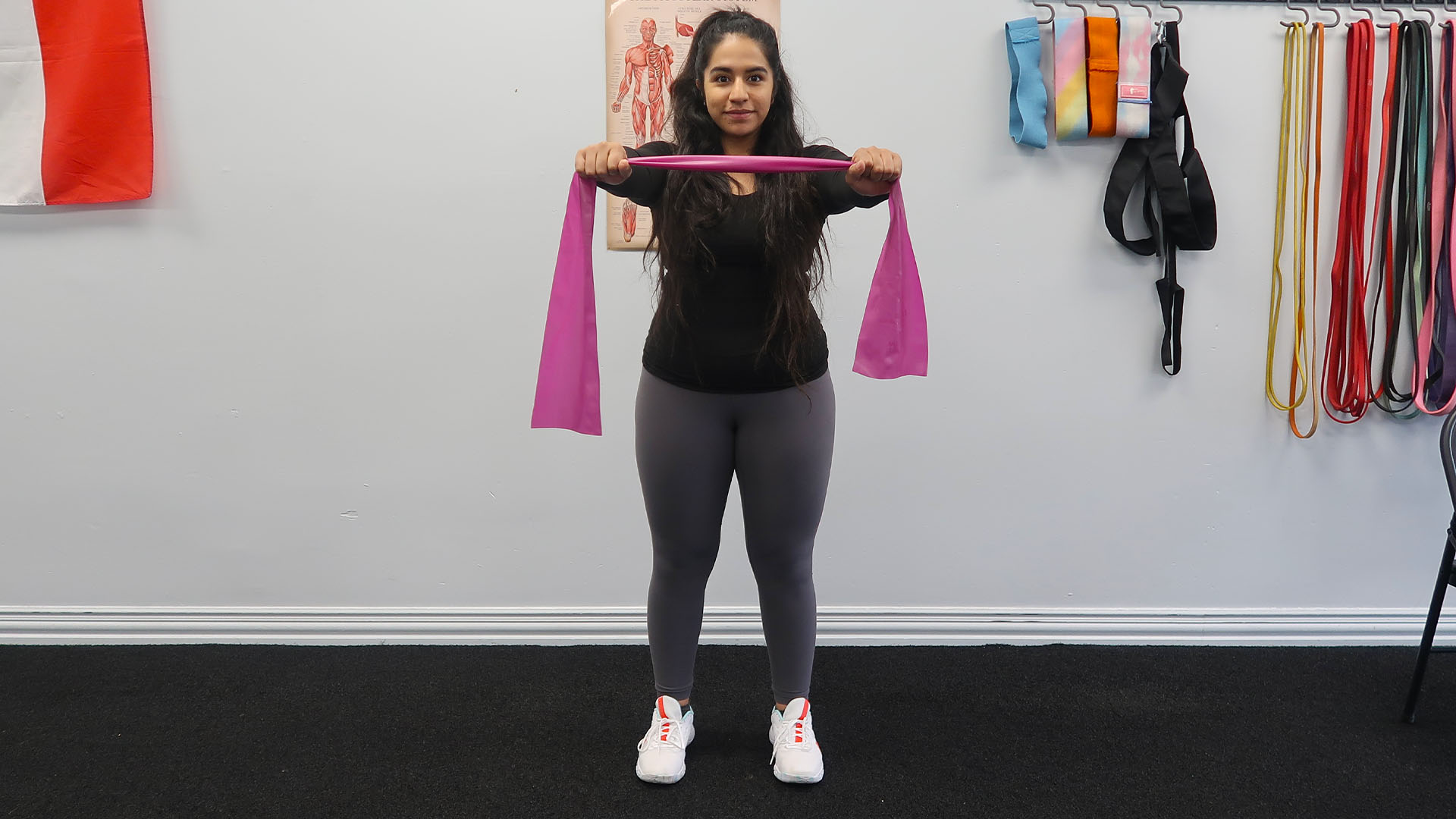
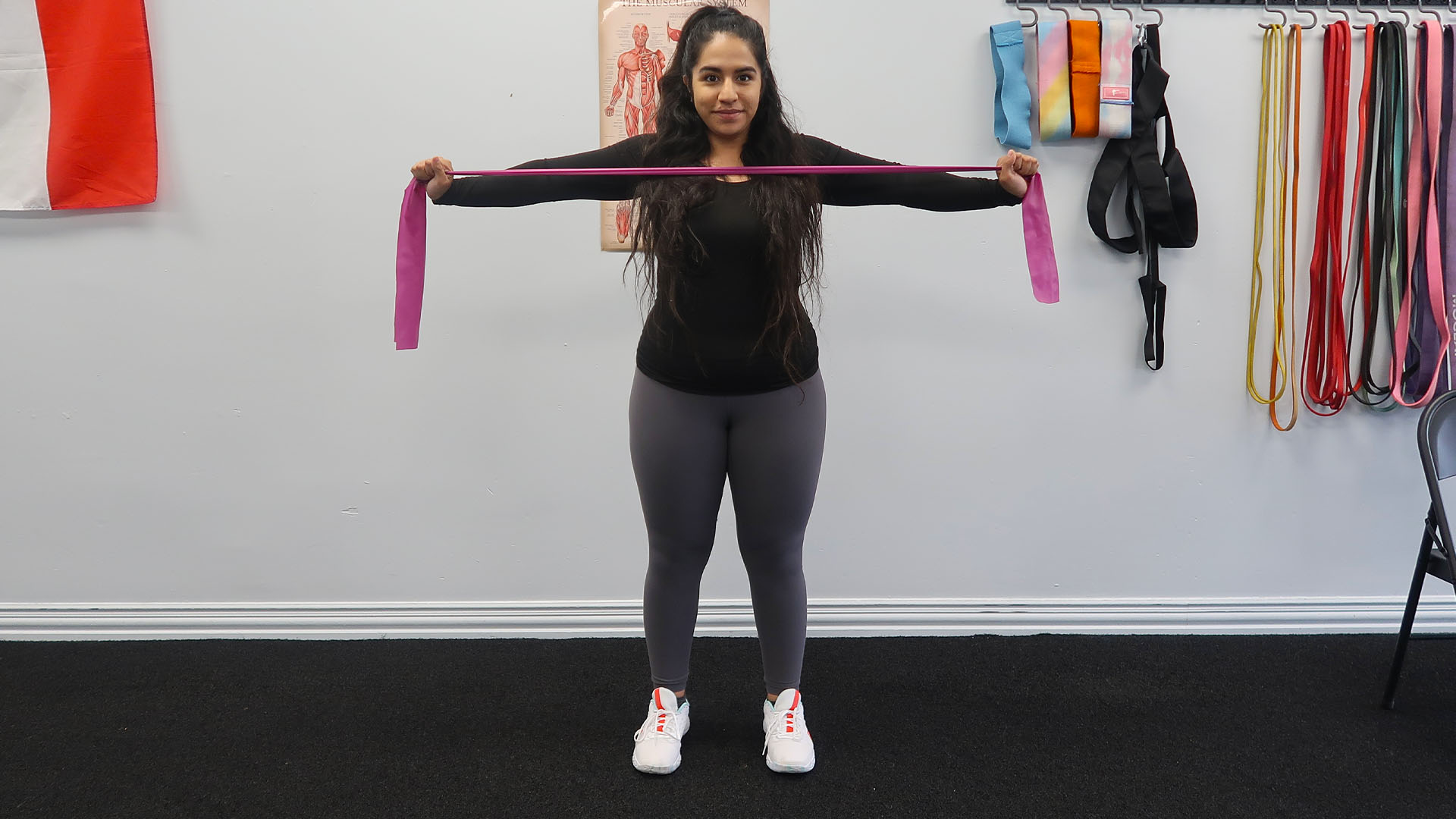
Keeping arms straight, pull the band towards each side, aiming to pull your arms laterally to the side. Slowly release the tension and return to the forward position, completing one repetition.
Marches (8-10 repetitions on each side)
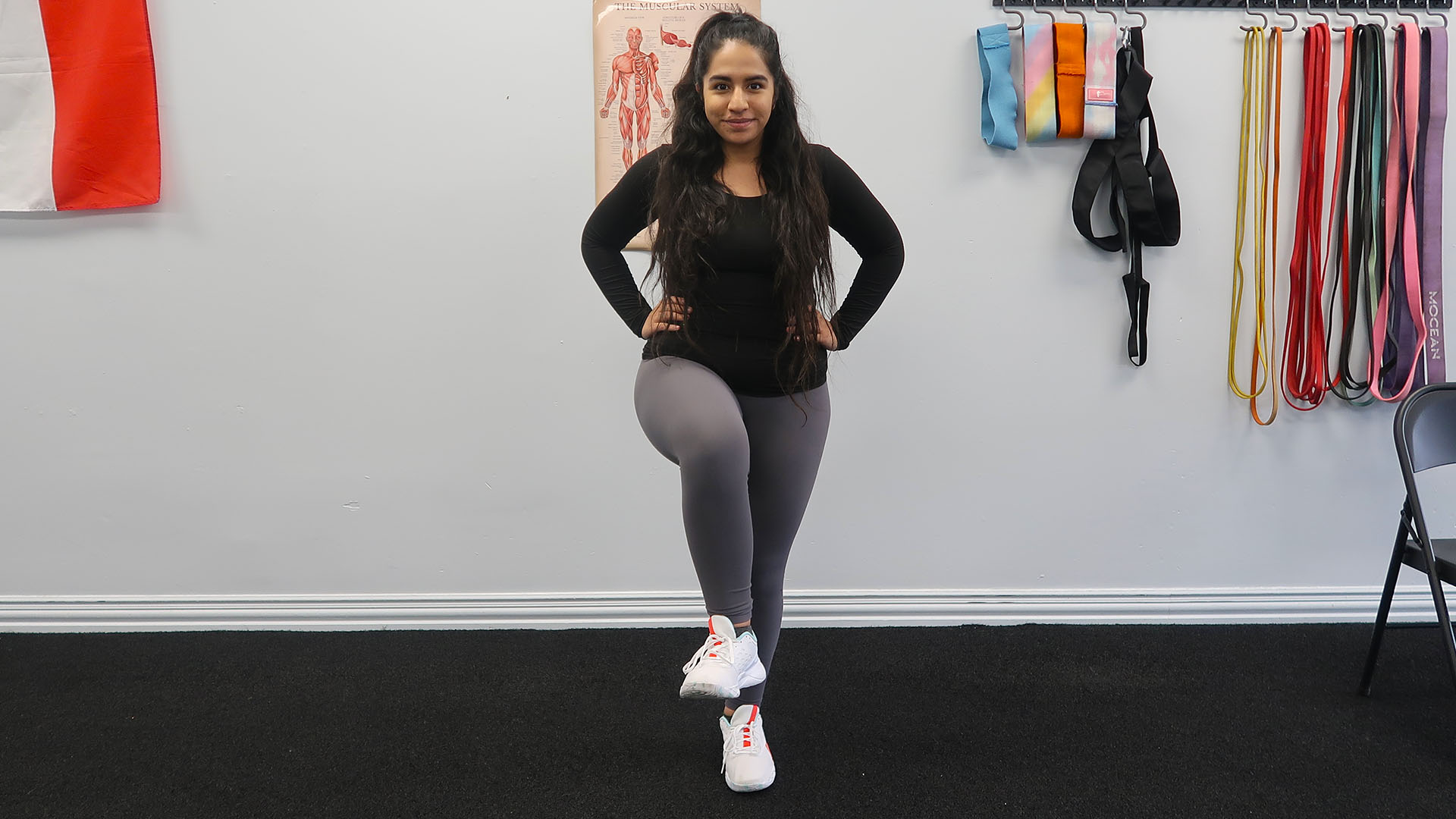
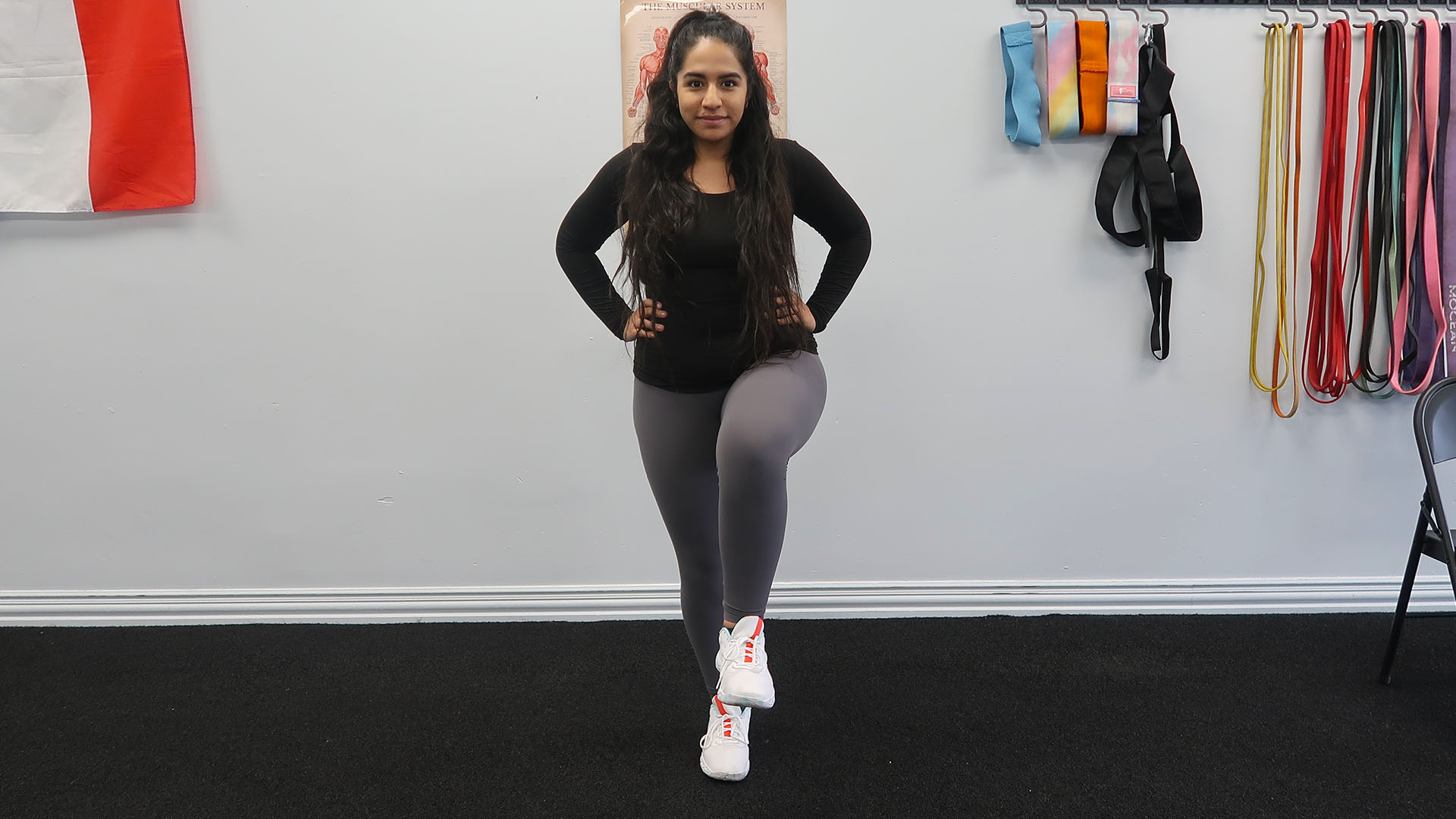
Start by standing up straight, and placing your hands on your hips. For additional support, stand near a wall or furniture to provide balance support. Take a deep breath and lift one knee up, keeping your core engaged throughout. Gently bring your leg down, and repeat the move with the other leg, focusing on controlling the movement.
Regression: You can try this movement on a chair for a seated variation.

Progression: If you want to add some weight to this movement, hold a light, empty suitcase (2-5 lbs) in one hand. As you hold the suitcases handle, continue to do your repetitions. Halfway through, switch the weight to the other hand and finish your repetitions.
Glute Bridges (8-12 repetitions)
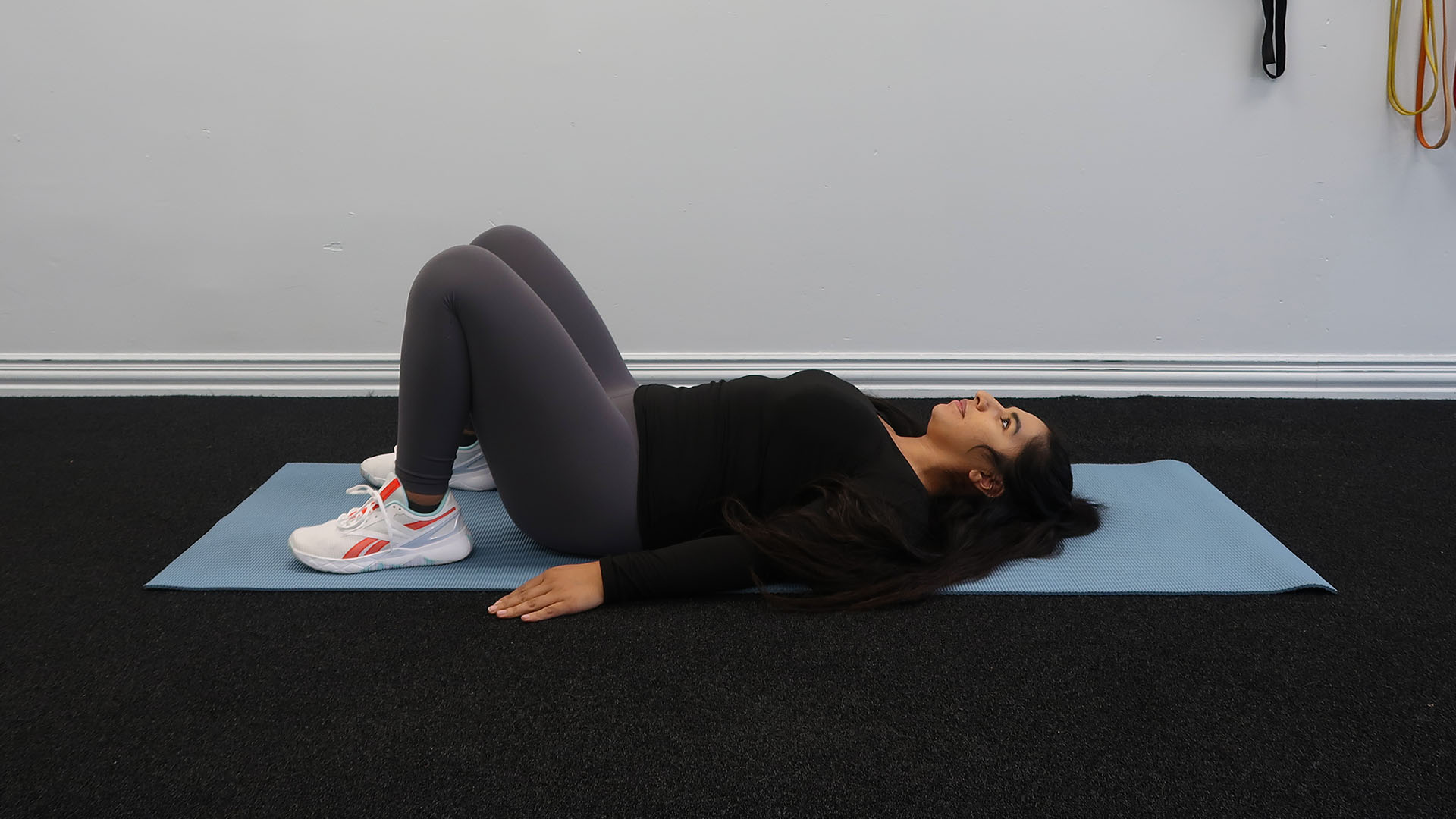
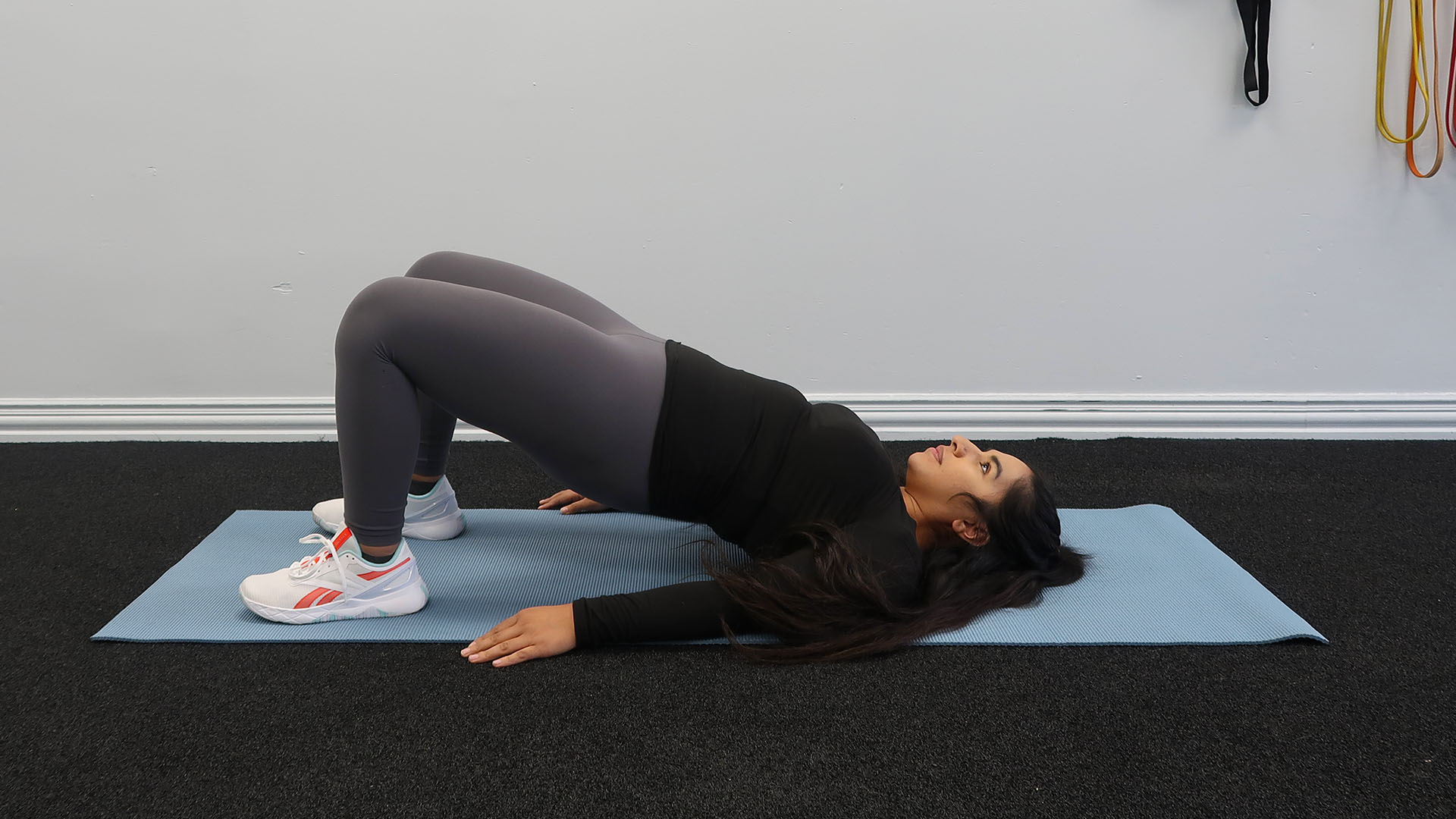
Start by laying down on the floor with knees bent and feet placed around hip-width apart. Take a deep breath, and raise your hips and squeeze your glutes at the top. Gently lower yourself, controlling your hips down back to the floor.
Bird Dogs (8-10 repetitions per side)
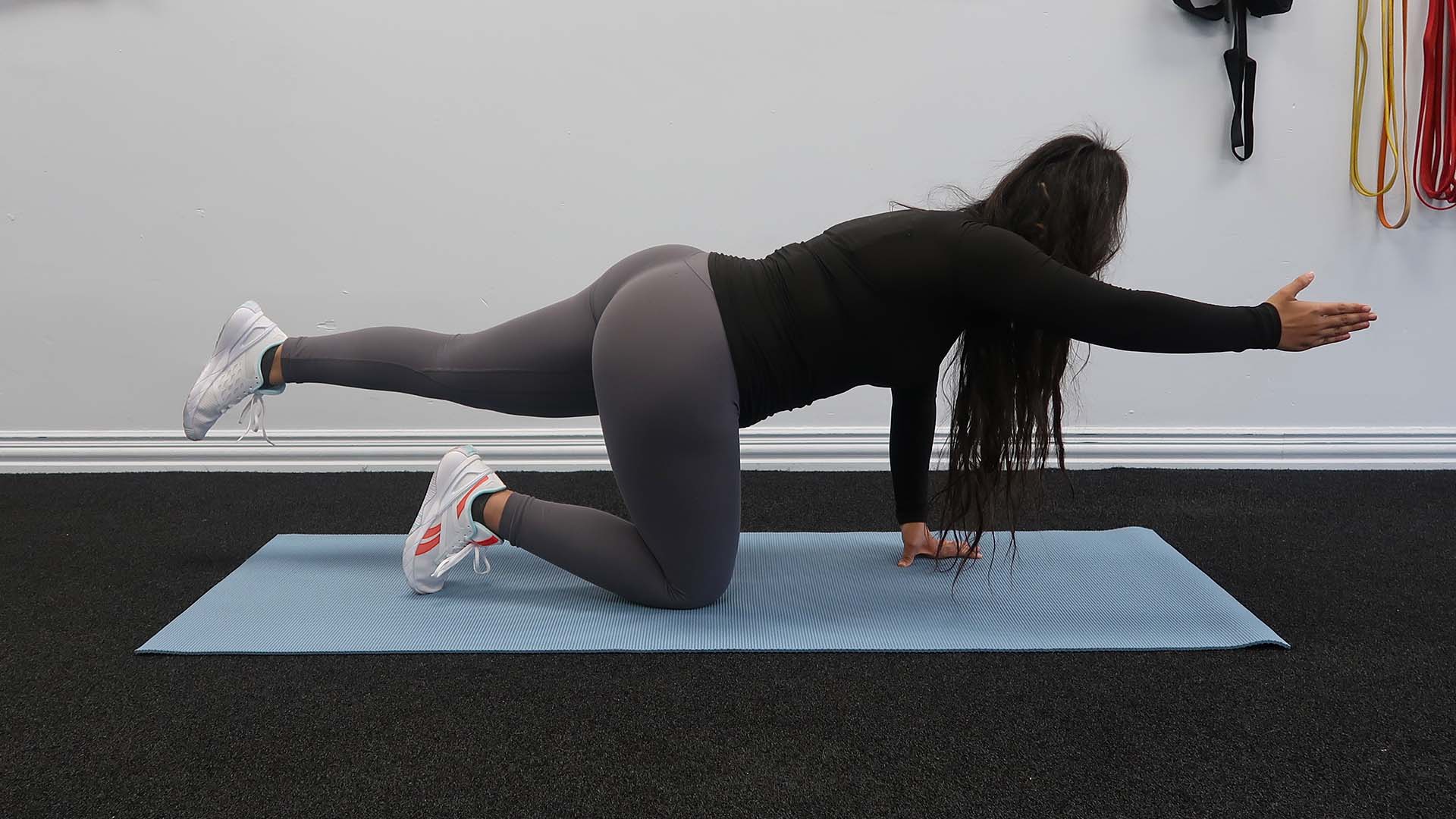
Start in a tabletop position, with your wrists aligned under the shoulders, and knees aligned under the hips. Take a deep breath, and lift your right arm and left leg simultaneously, while maintaining a neutral spine. Return to center, and alternate with the opposite arm and leg. Remember to control the movement, keeping your core engaged throughout each repetition.
Regression: Lift one limb at a time.
When it comes to exercising with arthritis, finding what works best for your body and your joints is essential to making movement a part of your routine. While resistance training has numerous benefits, other low-impact forms of exercise such as swimming, walking, tai-chi or water aerobics can be beneficial for cardiovascular health and overall quality of life.
